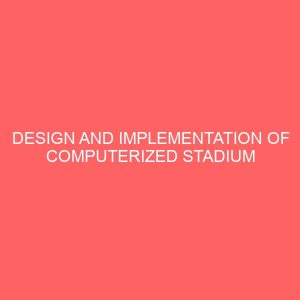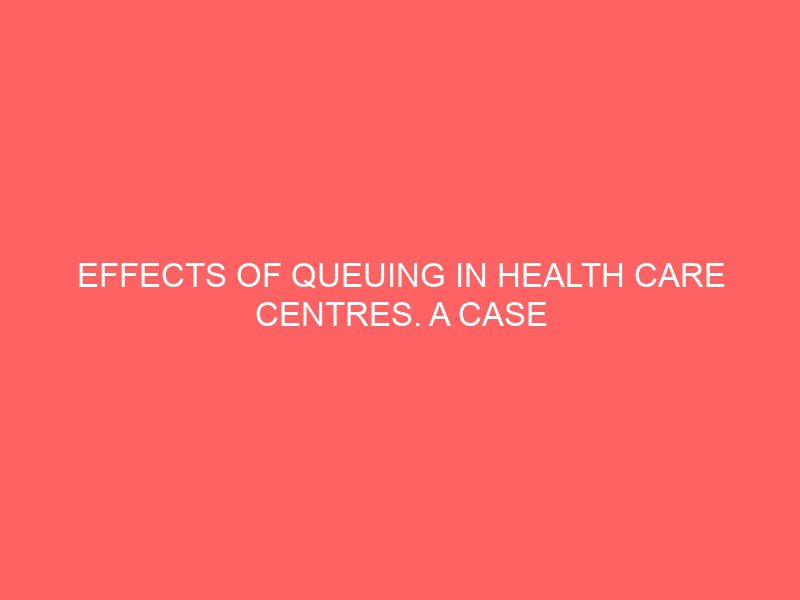Description
CHAPTER ONE 1.0 INTRODUCTION Queuing theory describes basic phenomena such as the waiting time, the throughput, the losses, the number of queuing items, etc. in queuing systems. Following Kleinrock (1975), any system in which arrivals place demands upon a finite-capacity resource can be broadly termed a queuing system. A queuing process consists of customers arriving at a service facility, waiting in a line (queue) if all servers are busy, then receiving service and finally departing from the facility. A queuing system is a set of customers, a set of servers and an order where by customers arrive and processed. Queues (waiting lines) are a part of everyday life. We all wait in queues to buy a movie ticket, make a deposit, mail a package, obtain food in cafeteria, pay for goods, etc. queues are formed because resources are limited. Time is always a valuable asset for patients in seeking treatment at any healthcare centre, either public or private, and even more valuable for patients who are in critical conditions. Doctors? and specialists need to maximize their service time since some of them are assigned with administrative works, reading medical reports, and keep moving from one department to another. Waiting idly in the waiting room is not a productive situation where patients can spend their waiting time to do other activities that might benefit them rather than sitting for nothing. Whenever the demand for a service exceeds its supply then queues are formed. Long waiting time in any hospital is considered as an indicator of poor quality and needs improvement. Managing waiting lines create a great problem for managers seeking to improve upon quality healthcare delivery and patient satisfaction. Patients dislike waiting for a long time. For many patients, queuing or waiting in lines is annoying (Obamiro, 2003) or negative experience (Scotland, 1991). If the waiting time and service time is high, customers may leave the queue prematurely and this in turn results in customer dissatisfaction. This would reduce patients demand and eventually reduce revenue and profits gained by hospitals. The study is designed to help the management of Federal-Medical Hospital about the employee adequacy and also help to reduce patient waiting time for services. Hence, this chapter critically discusses the background to the study. The chapter also looks at the statement of the problem, the objective of the study and the significance of the study. It also highlights on the research methodology used, the scope, limitations and the organization of the study. 1.1 BACKGROUND TO THE STUDY A queue is a waiting line, whether of people, signals or things (Ashhley, 2000). Queuing time is the amount of time a person, signal or a thing s







